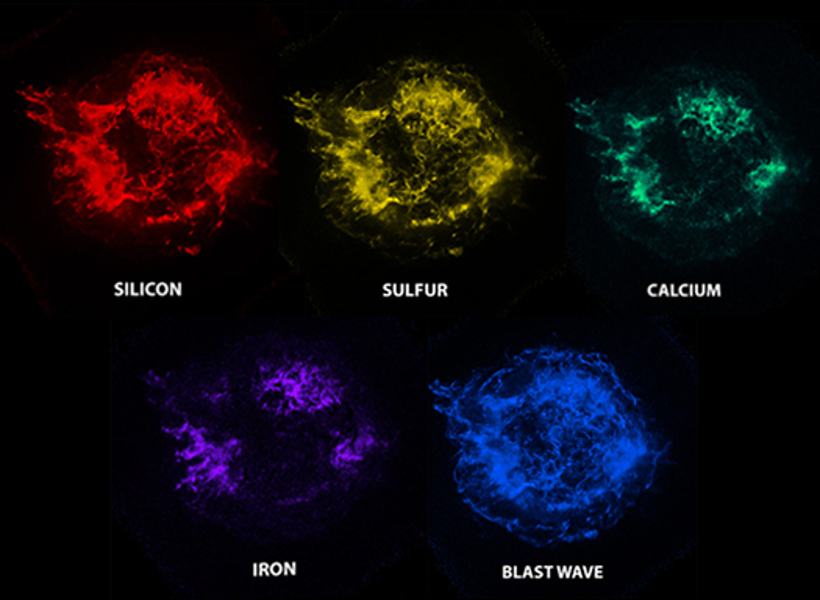
 Credit: NASA/CXC/SAO
Credit: NASA/CXC/SAO
Enrichment
There was a time long ago in the history of the Universe when life could not have existed. This was the time up to about 380,000 years after the Big Bang, before the first stars formed, when the material Universe was almost entirely composed of hydrogen and helium. But when the first stars formed, they began the process of building up more complex chemical elements through thermonuclear fusion, and also by exploding as supernovae. We don't yet know exactly how or when the first stars formed, or exactly how the chemical evolution of the Universe proceeded with time, but we can in some ways watch this chemical enrichment process happen in the local Universe by studying supernova explosions in the Milky Way and other galaxies. The image above shows the distribution of chemical elements in the Cas A supernova remnant, the gas expelled by the explosion of a massive star some 11,000 years ago, obtained through careful analysis of data obtained by the Chandra X-ray Observatory. This image was derived by determining the amount of X-ray radiation produced by highly ionized atoms of silicon, sulfur, calcium and iron, all essential ingredients needed to support life as we know it. Interestingly, different elements are most abundant in different parts of the supernova remnant. Detailed studies show that the remnant contains about 10,000 earth masses of sulfur, about 20,000 earth masses of silicon, some 70,000 earth masses of iron, and an amount of oxygen equivalent to about a million times the mass of the earth (equivalent to about 3 times the mass of the Sun). This material is dispersed into the Milky Way by the powerful blast wave of the supernova, and some of this material may eventually produce a solar system, perhaps even one containing rocky planets similar to earth.
Published: December 18, 2017
<
HEA Dictionary ● Archive
● Search HEAPOW
● Other Languages
● HEAPOW on Facebook
● Download all Images
● Education ● HEAD
>

Each week the HEASARC
brings you new, exciting and beautiful images from X-ray and Gamma ray
astronomy. Check back each week and be sure to check out the HEAPOW archive!
Page Author: Dr. Michael F. Corcoran
Last modified Monday, 26-Feb-2024 17:44:55 EST


